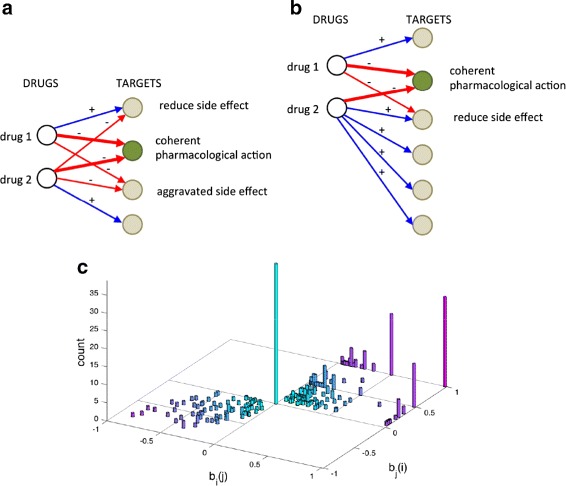Fig. 6.

Side effect quantification for drug pairs. Panels a and b The target in green is a common pharmacological target. The action of the two drugs on it (thick red arrows) is coherent and reinforces the effect. All other targets are off-targets and constitute a side effect for the two drugs. Panel a The two drugs share 2 off-targets. In one of them the simultaneous presence of the two drugs tends to mitigate the effect, while in the other the two drugs act with the same sign, hence the side effect on it is aggravated. Overall the drug 1 experiences a side effect improvement on 50 % of its off-targets but an aggravation on the remaining 50 %, while for drug 2 the beneficial/aggravating effect is only on 33 % of the off-targets. For both however, the side effect score is equal to 0: b 1(2)=b 2(1)=0. Panel b The side effect on the off-target in common is reduced by the combination of drugs. For drug 1, b 1(2)=0.5, while for drug 2 it is b 2(1)=0.25, because of the higher number of off-targets. Panel c The histogram shows the side effect score coefficient for all drug pairs having a positive synergistic score on the common pharmacological targets. For 63 % of the resulting pairs the side effect score is positive, while it is negative for 25 % of pairs and neutral in the remaining cases (bar in the origin, representing cases in which ). For a significant fraction of pairs (17 %) the mutual benefit is at least 50 % (i.e., b i(j)≥0.5 and b j(i)≥0.5). The number increases if we look at pairs in which at least one of the two drugs has a 50 % improvement (42 % of pairs)
